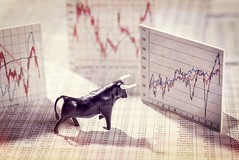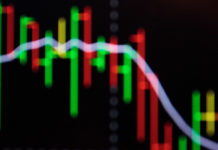Commodity Trading Advisors (CTAs) have been performing fairly well as a whole thus far in 2019 with Autumn Gold CTA index (non-investable) reporting 5.79% YTD. The Barclay CTA Index is up about 7.61 percent as of August. Both indices are comprised of about 400 – 500 CTAs of various strategies and markets traded. This is slightly better than their Hedge Fund Index of 2216 funds that is up 6.77 percent through August.
Systematic and trend following CTAs appear to be outperforming the discretionary traders. The Agriculture CTA programs are at the bottom end of the performance charts this year. The Barclay Agricultural Traders Index is down 0.11 percent YTD. Some CTAs who trade the agriculture commodities have fared well, but most have struggled in this market environment.
The agriculture markets sector consists mostly of corn, soybeans, wheat, live cattle and lean hogs. It is not a stretch to say that several curve balls were thrown at these markets this year. Some of the highlights include:
- China lost a large portion of the hog herd due to African Swine Flu and expectations were high that the US would export a great deal of pork to China and Asia.
- Extremely wet weather this spring caused major delays in planting crops.
- Trade issues with China put exports in jeopardy for grains and livestock – prices collapsed.
- Many farmers and traders expected the USDA to cut acreage and yield estimates for crops much more than they actually did.
- A trade deal with Japan was announced with favorable terms for grains and livestock.
These were not easy waters to navigate, especially for CTAs who use fundamental analysis. However, it is their job to properly navigate the markets regardless of the market environment. The situation was not all bad for those who took a more systematic or trend following approach.
One example is Wharton Capital Management. They posted a gain of 3.85% in July and an 8.9% gain in August according to Autumn Gold. Keep in mind that past performance is not necessarily indicative of future results. They use a trend following strategy and focus medium to short term. They obviously executed well and had a good two months. Other CTAs in this sector were likely caught in the wild swings in prices from the China trade war and weather. It remains to be seen how the rest of the year will play out and whether the CTA Agriculture Index can get into the plus column.
PAST PERFORMANCE IS NOT NECESSARILY INDICATIVE OF FUTURE RESULTS. TRADING FUTURES AND OPTIONS INVOLVES SUBSTANTIAL RISK OF LOSS AND IS NOT SUITABLE FOR ALL INVESTORS. THERE ARE NO GUARANTEES OF PROFIT. The Autumn Gold CTA Index is comprised of the client performance of all CTA programs included in the AG database. CTA programs with proprietary performance are not included. AUTUMN GOLD CTA INDEXES ARE NON-INVESTABLE INDEXES COMPRISED OF THE CLIENT PERFORMANCE OF CTA PROGRAMS INCLUDED IN THE AUTUMN GOLD DATABASE AND DO NOT REPRESENT THE COMPLETE UNIVERSE OF CTAS. INVESTORS SHOULD NOTE THAT IT IS NOT POSSIBLE TO INVEST IN THESE INDEXES.
The Barclay CTA Index is a leading industry benchmark of representative performance of commodity trading advisors. There are currently 510 programs included in the calculation of the Barclay CTA Index for 2019. The Index is equally weighted and rebalanced at the beginning of each year. To see historical data on the number of programs included in the Barclay CTA Index, click here.
To qualify for inclusion in the CTA Index, an advisor must have four years of prior performance history. Additional programs introduced by qualified advisors are not added to the Index until after their second year. These restrictions, which offset the high turnover rates of trading advisors as well as their artificially high short-term performance records, ensure the accuracy and reliability of the Barclay CTA Index.
Past performance is not necessarily indicative of future trading results. The funds represent speculative investments and involve a high degree of risk. An investor could lose all or a substantial portion of his or her investment.




